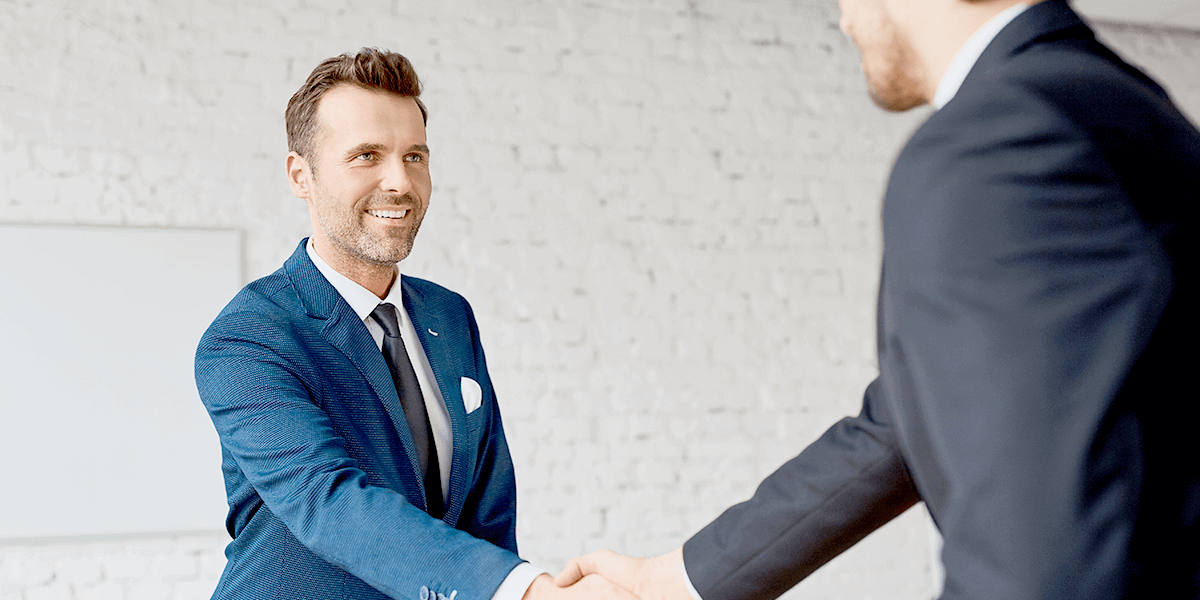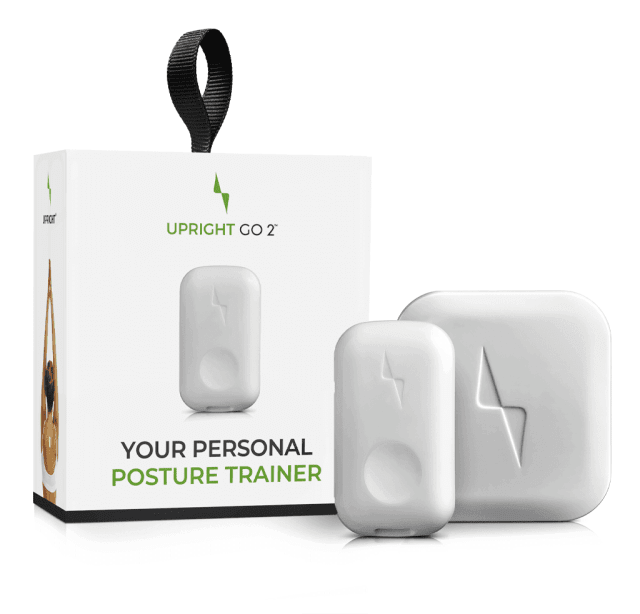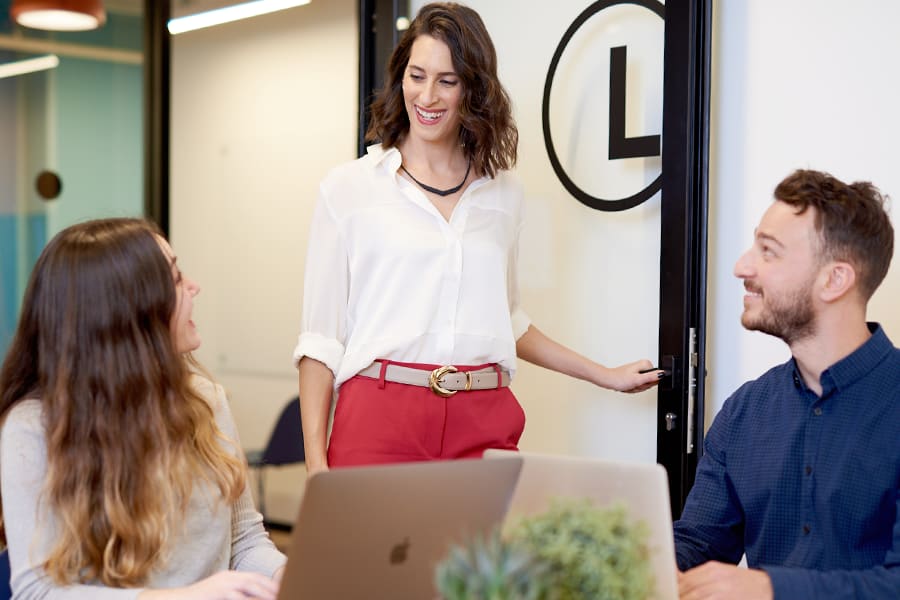How to Sit in an Interview and Get Hired
Max Frenkel

In this article, we’ll teach you how to sit in an interview to maximize your chances of landing that dream job. Your interview sitting position and posture during interview can make or break your first impression.
“What is your biggest weakness?” is always a tricky interview question. Oftentimes, the answer will be staring the interviewer in the face before you’ve even said a word.
For many of us, poor posture is that weakness, though we might not realize it. The nonverbal cues we send via our body language can easily affect the outcome of a job interview. That’s why it’s so important to choose our body positions as carefully as we do our words.
Prep for the big day with an UPRIGHT GO 2 smart posture trainer.
The Science Behind Interview Posture: Fake it Till You Make It
How many times have you gone into a job interview feeling less than confident? Don’t worry, it’s perfectly normal to be nervous in a high-pressure situation, especially when you’re trying to impress. The trick is to get a handle on your nerves and not let them get the better of you.
“Power poses don’t just reflect power, they produce it.”
Mind Games: The Psychology of Interview Posture
Now, you’re probably wondering how you can project an air of confidence when, deep down, you’re a bundle of nerves. The answer lies in a 2012 Harvard University study entitled The Benefit of Power Posing Before a High-Stakes Social Evaluation. The study found that adopting an open, relaxed body position – or “high-power” pose – doesn’t just reflect power, it produces it. In other words, the way you hold your body can actually trick your brain into feeling confident. Pretty mind-blowing stuff! So roll your shoulders back, keep your chin up, and get ready to rock an interview.
It all happens on a chemical level. Power posing increases the production of the dominance hormone testosterone, making you feel like the powerful, action-oriented risk-taker you want to be seen as. At the same time, it decreases the stress hormone cortisol, which is responsible for those pesky interview jitters that hold you back.
Participants in the Harvard study were required to deliver a speech while in either a high or low-power pose as part of a mock interview. Interestingly, the high-power posers performed better and were considered more employable than those with a closed-off or “low-power” body position. Let that be an incentive to improve your posture and tap into your inner strength.
Pre-Interview Power Posing Techniques
You can also prep for your big interview with extra powerful power poses ahead of time. That’s right, power posing isn’t limited to your interview sitting position. In fact, many people prep for nerve-wracking events by spreading their feet a little larger than shoulder-width and raising their hands high in the air, making their body into a giant ‘X.’ While you may feel silly at first, holding this position truly works your hormones to give you the confidence ‘X’ Factor. Do your power posing at home in your room, alone on the elevator, or standing in the bathroom right before your interview.
Make a Good First Impression with Proper Interview Posture
As you wait to meet the interviewer, be aware that the receptionist or potential future colleagues might be observing you. This is the perfect time for you to get into a confident upright posture with your back straight and your chin parallel to the ground. Your posture during interview waiting time sets the tone for everything that follows.
Interviewers are usually busy people who have to make quick decisions. In fact, they’ll often size you up in the first 10 seconds of meeting you. Their assessment starts the moment you enter the room, which is why you should walk in with purpose and energy, but never strut.
With your shoulders pulled back and your neck extended, walk directly toward the interviewer, maintaining eye contact. A friendly smile and a firm handshake show confidence and will help create an instant bond.
How to Sit in an Interview: The Complete Guide
How to sit during an interview is one of the most important aspects of your body language. Your interview sitting position says more about you than you may realize and can significantly impact the interviewer’s perception of your confidence and professionalism.
Basic Interview Sitting Position
When the interviewer offers you a seat, sit with your back straight (but not too stiff) against the chair, feet firmly on the floor. You might find it useful to imagine an invisible string pulling you up from the top of your head. This creates the ideal interview sitting position that projects confidence and alertness.
What NOT to Do: Common Interview Posture Mistakes
- Leaning back in your chair: May be interpreted as a lack of interest in the job or a careless attitude
- Slouching forward: Can indicate nervousness and low self-esteem
- Crossing your arms: Might give the impression that you’re defensive or standoffish
- Crossing your legs at the knee: Can appear too casual for some interview settings
- Fidgeting or moving around: Shows nervousness and lack of control
Perfect Interview Sitting Position Checklist
- ✅ Back straight against the chair (not rigid, but supported)
- ✅ Feet flat on the floor (both feet, no crossing)
- ✅ Shoulders back and relaxed (not hunched forward)
- ✅ Hands placed naturally (on lap or table, not hidden)
- ✅ Head held high (chin parallel to ground)
- ✅ Slight forward lean (shows engagement, not slouching)
How to Sit in an Interview Female vs Male: Gender-Specific Tips
While the basic principles of good interview posture apply to everyone, there are some gender-specific considerations for how to sit during an interview.
How to Sit in an Interview Female
If you are interviewing in a dress or skirt, cross your legs at the ankle to maintain polite manners without giving off an adverse demeanor. This sitting posture for interview maintains professionalism while being comfortable.
Additional Tips for Women:
- Ankle crossing: More professional than knee crossing in business attire
- Hand placement: Keep hands visible, either on lap or table
- Posture consistency: Maintain the same professional posture throughout
- Avoid fidgeting: Resist urges to adjust clothing or hair repeatedly
How to Sit in an Interview Male
Men can typically sit with feet flat on the floor, knees slightly apart (not wide), maintaining a confident but respectful interview sitting position.
Additional Tips for Men:
- Foot positioning: Both feet flat, shoulder-width apart
- Avoid manspreading: Keep knees at reasonable distance
- Confident stance: Sit tall without appearing rigid
- Professional demeanor: Maintain formality throughout the interview
Advanced Interview Posture Techniques
The Psychology of Sitting Posture in Interview Settings
Good upright posture not only projects confidence but also makes you appear taller, which is considered by many to be a sign of intelligence and credibility. You’ve heard of dressing for success. Well, think of this as sitting for success!
Using Hand Gestures Effectively During Interview
If you naturally talk with your hands, it’s fine to do that in the interview as long as your gestures aren’t overly enthusiastic or aggressive and you commit to your style. Using your hands halfway or apprehensively can be a tell of your nerves. Choose to use smooth, natural gestures or no gestures at all.
Hand Gesture Guidelines:
- Natural movements: Use gestures that feel comfortable to you
- Avoid sharp motions: No “karate-chop” gestures when making points
- No pointing: Keep gestures open and inclusive
- Control fidgeting: Avoid cracking knuckles or picking at nails
Best Hand Positions for Interview Sitting Position:
- Loosely clasped: Fingers together, resting on lap or table
- Church steeple: Fingertips pressed together for confidence
- Open palms: Shows honesty and engagement
- Avoid hiding hands: Don’t put them in pockets or under table
Maintaining Appropriate Eye Contact During Interview
Emphasis on the word appropriate.
Maintaining eye contact with the interviewer is important for a few reasons; it shows that you’re giving them your undivided attention and also that you’re trustworthy. However, you’ll want to strike the right balance as part of your overall interview posture.
Eye Contact Best Practices:
- Natural rhythm: Alternate between eyes, nose, and mouth every few seconds
- Active listening: Use occasional head nods and smiles
- Direct contact: Always return to eye contact when answering questions
- Avoid staring: Don’t burn holes with intense gazing
- Don’t avoid completely: This makes you appear shifty
Mirror the Interviewer’s Body Language
One of the fastest ways to establish good rapport with the interviewer is to adopt similar gestures, facial expressions, or posture as them. While mimicking their behavior might sound disrespectful at first, “mirroring” is actually a proven technique for building trust in a relationship.
Mirroring Techniques:
- Subtle copying: Match their level of formality in sitting posture
- Energy matching: If they’re relaxed, let your posture reflect that
- Natural flow: Maintain neutral spine while adjusting
- Don’t overdo it: Subtle mirroring, not obvious copying
Interview Sitting Position for Different Interview Types
Formal Corporate Interviews
Maintain a more structured interview sitting position with feet flat on floor, back straight, and hands visible. Professional formality is key.
Casual/Startup Interviews
While you can be slightly more relaxed, maintain professional posture during interview. Good posture always makes a positive impression.
Panel Interviews
Your sitting posture for interview becomes even more important when multiple people are observing. Maintain consistent good posture and engage with each panel member.
Video Interviews
Even though only your upper body is visible, maintain full good posture. It affects your voice, confidence, and overall presence on camera.
Common Interview Posture Questions Answered
How should I sit during an interview if I’m nervous?
Focus on your breathing and the basic interview sitting position: feet flat, back straight, shoulders relaxed. Use the “invisible string” technique to maintain good posture.
What if the chair is uncomfortable?
Adapt your interview sitting position to the furniture while maintaining the core principles: straight back, engaged posture, and professional appearance.
How long should I maintain perfect posture during interview?
Throughout the entire interview. Consistency in your posture during interview shows discipline and professionalism.
Should my interview posture change for different types of questions?
Maintain the same professional sitting posture for interview throughout, but you can lean slightly forward during particularly engaging topics to show interest.
Beyond the Interview: Maintaining Professional Posture
Of course, knowing how to sit in an interview is only half the battle. You’ll want to maintain that good form once you start working, as correct posture in the office is essential to your focus, productivity, and general wellbeing.
Building Long-Term Posture Habits
Your interview success with proper posture during interview can extend into your career. Good posture becomes a professional asset that serves you throughout your working life.
Technology to Perfect Your Interview Posture
Preparing for interviews requires practice, and maintaining perfect interview sitting position takes awareness and training. Modern posture training technology can help you develop the muscle memory and awareness needed for confident interview posture.
Benefits of Posture Training for Interview Success:
- Muscle memory development: Automatic good posture without thinking
- Confidence building: Better posture leads to better self-image
- Real-time feedback: Learn to recognize and correct poor posture
- Consistent improvement: Daily training for lasting results
Your body language has a significant influence on the outcome of a job interview. By mastering how to sit during an interview and maintaining proper interview posture, you’re giving yourself the best possible chance at success. Remember: your interview sitting position, posture during interview, and overall professional presence all work together to create a winning impression.
You Might also Like
Search
Sign up to our newsletter
Follow Us On
Popular
Revisit the GO 2/S Device Setup
How to get started
Finding your upright position
How to find your target upright posture
Calibration
Check out the UPRIGHT GO 2




